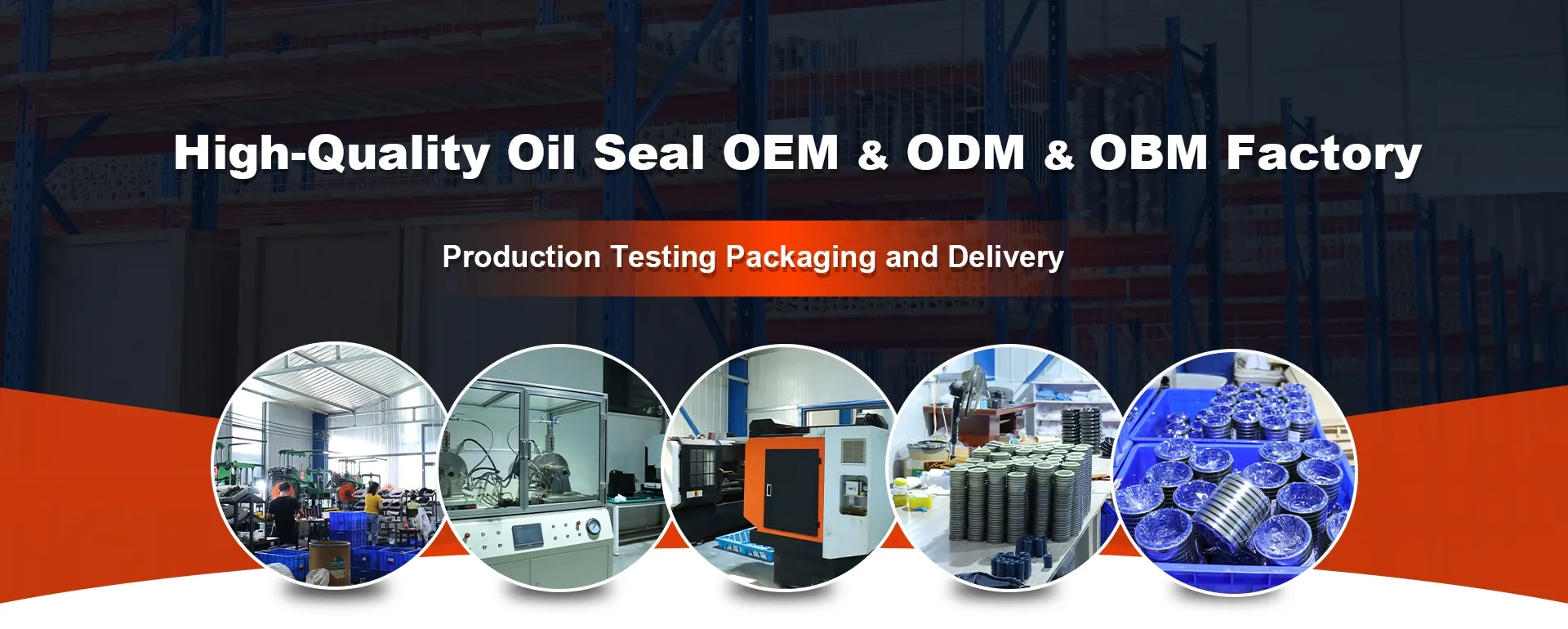अक्टूबर . 05, 2024 02:06 Back to list
hydraulic oil seal
Understanding Hydraulic Oil Seals Importance and Applications
Hydraulic systems are instrumental in various industrial applications, from manufacturing machinery to heavy construction equipment. One critical component that ensures the efficiency and effectiveness of these systems is the hydraulic oil seal. This article delves into the significance of hydraulic oil seals, their types, applications, and maintenance considerations.
What are Hydraulic Oil Seals?
Hydraulic oil seals, often referred to as simply seals, are mechanical devices used to prevent the leakage of hydraulic fluids from components such as cylinders, pumps, and hydraulic motors. They play a crucial role in maintaining system pressure, ensuring longevity, and enhancing the performance of hydraulic systems. Typically made from materials such as rubber, polyurethane, or polytetrafluoroethylene (PTFE), these seals are engineered to withstand various pressures and temperatures.
Importance of Hydraulic Oil Seals
1. Leak Prevention The primary function of hydraulic oil seals is to create a barrier that prevents fluid from escaping the system. Leaks can lead to significant inefficiencies and safety hazards, making reliable seals crucial for operational integrity.
2. Pressure Maintenance Hydraulic systems rely on pressure to function effectively. By sealing spaces within hydraulic components, these seals ensure that the necessary pressure is maintained, leading to better performance and more effective operations.
3. Contamination Control Hydraulic fluids can be sensitive to contamination, which can degrade system performance. Oil seals help keep dirt, moisture, and other contaminants out of hydraulic systems, protecting critical components from wear and tear.
4. Extending Service Life High-quality hydraulic oil seals not only prevent leaks but also prolong the life of hydraulic components. By preventing pressure loss and contamination, these seals contribute to overall system durability and reduce downtime due to maintenance or repairs.
Types of Hydraulic Oil Seals
Hydraulic oil seals come in various shapes and sizes, each designed for specific applications. Some common types include
1. O-Rings Circular seals that are widely used for their simplicity and effectiveness in creating pressure barriers in hydraulic systems.
2. U-Cup Seals These seals have a U-shaped cross-section and are often used in piston applications, providing a tight seal under both dynamic and static conditions.
3. V-Ring Seals Designed to protect against dirt and moisture while sealing against fluids, these are particularly effective in rotary applications.
4. Flat Seals Common in applications requiring a flat sealing surface, they serve well in lower-pressure systems.
5. Lip Seals These seals feature a flexible lip that conforms to the surface it seals against, making them effective in preventing fluid escape and retaining lubrication.
hydraulic oil seal

Applications of Hydraulic Oil Seals
Hydraulic oil seals are utilized in a variety of industries, including
- Automotive In vehicles, hydraulic seals are commonly found in braking systems, power steering, and hydraulic lifts.
- Construction Heavy machinery such as excavators, loaders, and cranes rely on hydraulic seals to ensure smooth operation and prevent leaks.
- Manufacturing Hydraulic presses and assembly lines benefit from reliable seals that improve operational efficiency.
- Aerospace In aircraft systems, high-performance hydraulic seals are essential for maintaining safety and functionality.
Maintenance and Best Practices
To ensure that hydraulic oil seals perform optimally, regular maintenance and inspection are key. Here are a few best practices
1. Regular Inspections Periodically check seals for signs of wear, deformation, or damage. Early detection can prevent significant leaks and system failures.
2. Proper Installation Follow manufacturer guidelines for installation. Improper installation can lead to premature failure.
3. Fluid Compatibility Use hydraulic fluids that are compatible with the seal material to avoid chemical degradation.
4. Temperature Monitoring Keep an eye on operating temperatures, as extremes can affect seal performance and longevity.
5. Maintain Cleanliness Keep the hydraulic system clean and free from contaminants that can compromise the integrity of seals.
Conclusion
Hydraulic oil seals are integral to the functionality and reliability of hydraulic systems across various sectors. Understanding their importance, different types, and maintenance practices can help operators optimize their systems, thereby ensuring safety, performance, and longevity. Properly selected and maintained hydraulic oil seals not only enhance operational efficiency but also reduce costs associated with leaks, repairs, and downtime.
-
The Trans-formative Journey of Wheel Hub Oil Seals
NewsJun.06,2025
-
Graphene-Enhanced Oil Seals: Revolutionizing High-Pressure Oil Sealing
NewsJun.06,2025
-
Future of Hydraulic Sealing: Advanced Intelligent TCN Oil Seals
NewsJun.06,2025
-
Don’t Let a Broken TCV Oil Seal Ruin Your Day
NewsJun.06,2025
-
Bio-Inspired Dust Seals for Better Sealing Performance
NewsJun.06,2025
-
Biodegradable and Sustainable Hydraulic Seal Materials
NewsJun.06,2025
-
Top Oil Seal Solutions for Your Industrial Needs
NewsMay.22,2025
Products categories
















